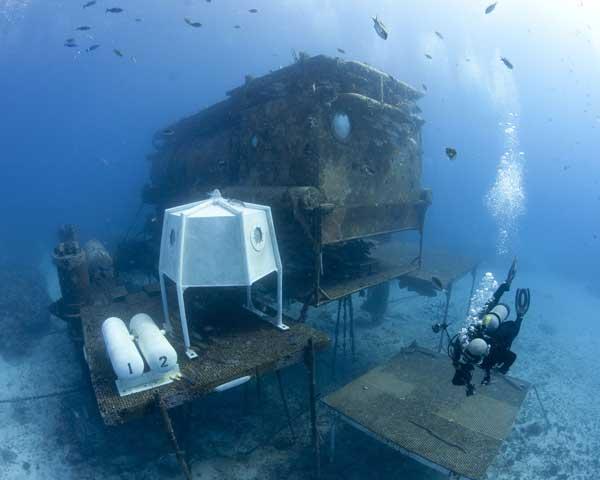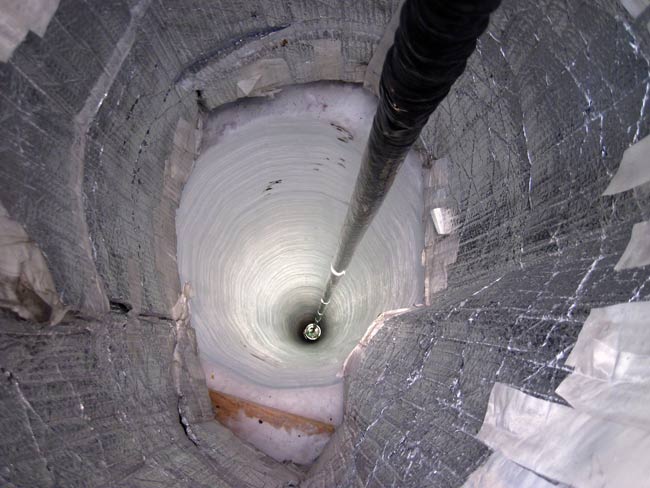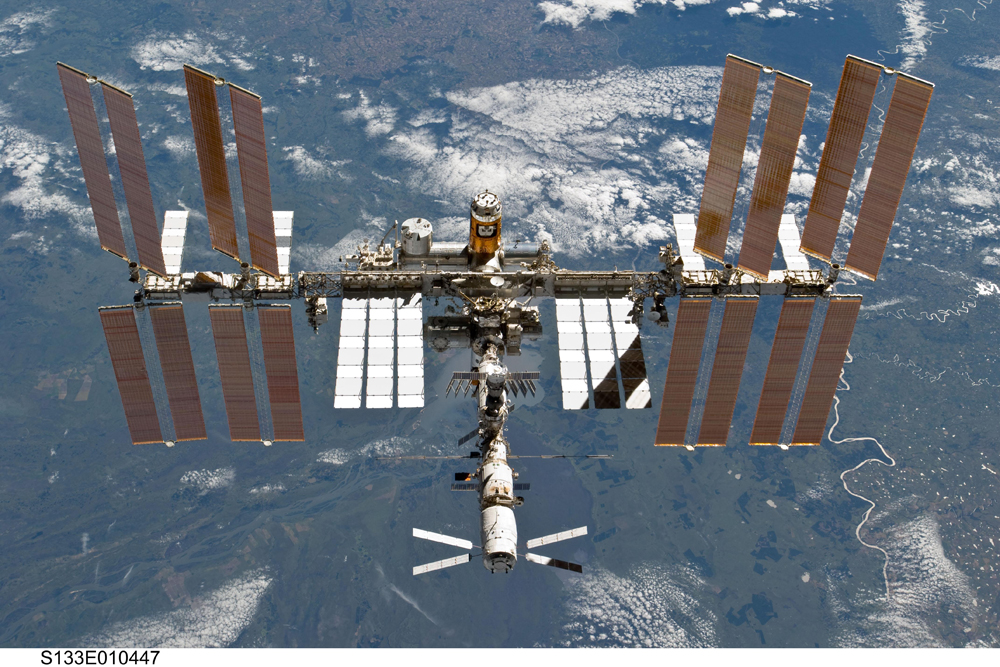
World's Most Extreme Laboratories
Laboratories around the world

The word "laboratories" tends to conjure images of bespectacled scientists in white lab coats fiddling with beakers or observing lab mice. But there are plenty of other laboratories, many out in some of Earth's most extreme environments.
These five laboratories are in some of the most difficult conditions on and off the planet — at the poles, on mountaintops, under the water — where people venture to learn more about the world around us. Their work provides valuable information for weather forecasts, possible information on how aging affects the human body, and maps the impact climate change has on the land and the sea, among many other things.
Norwegian glacier lab

Far in northern Norway, a remote lab sits under nearly 700 feet (200 meters) of ice. Getting there requires a flight to a remote Norwegian town, then a drive and a ferry to the trail leading to the entrance of the tunnel of Svartisen glacier, in which the lab was dug. In good weather, walking takes an hour, but snowy conditions can make it a four- or five-hour trudge.
Despite the harsh weather, winter conditions are when the researchers use the lab (operated by the Norwegian Water Resources and Energy Directorate) as they want to avoid the melt water that forms in the more hospitable summer months. Their work focuses on glacier movements and how these big slabs of ice drain in the warmer weather, including elements such as sea level rise that occurs when glacier water reaches the oceans. Researchers are also examining how moving glaciers send out seismic signals.
Inside the glacier facility are three laboratories and several rooms for living space, including four bedrooms, a kitchen and a bathroom complete with shower. Usually, three to four people live in the lab for six to seven days each, between the months of November and April.
Mount Washington Observatory

This lab is advertised as a spot with "bitter cold, dense fog, heavy snow and record wind," yet researchers have occupied Mount Washington Observatory continuously since 1932. Scientists provide weather information from the peak of the mountain in New Hampshire, some 6,288 feet (1,917 meters) from the ground.
Winds at the peak frequently reach 100 mph (160 km/h); in April 1934, the second-fastest wind ever measured on Earth blew over the peak at 231 mph (372 km/h).
Get the world’s most fascinating discoveries delivered straight to your inbox.
The first office atop the peak was established in 1870 and remained until 1892, and is billed as the first of its type in the world. Scientists took to the peak again in 1932 and since then, have provided regular weather information with the broader goal of performing research on the systems that affect Earth's climate.
Despite its extreme location, the observatory has a summit museum that it opened in 1973. It also provides tours to the public as well as overnight and day trips. More than 100,000 people make the trek every year. In 2014, the museum aims to be reborn as "Extreme Mount Washington" and provide simulations of the harsh weather researchers experience.
Aquarius Reef Base

About 50 feet (15 meters) under the water at the Florida Keys National Marine Sanctuary sits underwater living space that can house researchers for up to 10 days. Florida International University's Aquarius Reef Base boasts interior space equivalent to that of a medium-sized apartment (the complex is about 43 by 20 by 16.5 feet, or 13 by 6 by 5 m). The laboratory has room for six bunks, a shower and toilet, and even small comforts such as a microwave and hot water.
Operations began in 1993, with an aim of better understanding and monitoring the environment surrounding the lab. The Aquarius laboratory has a mandate to examine the surrounding coral reef and fish to see how well they are performing in the face of climate change and human activity. Additionally, researchers examine how waves bring nutrients and other resources to the reefs.
Its principal scientific achievement was finding links for the causes and distribution of black-band disease, which can disintegrate coral.
At the end of a typical 10-day mission, the pressure inside Aquarius is brought to the equivalent of surface pressure while remaining under the water. The researchers inside then swim to the surface.
The South Pole

Despite being in one of the middle of the most extreme environments on Earth — Antarctica — the South Pole is host to a number of research stations.
The U.S. National Oceanographic and Atmospheric and Administration's South Pole Observatory, which began operations in 1957, hosts several scientific missions. An atmospheric research observatory examines aerosols, gases and solar radiation to see how each of these affects Earth's climate. Researchers also send out periodic atmospheric balloons to obtain information from the surrounding air. A typical research mission there lasts a year and includes only two people.
The South Pole also has a particle detector called the IceCube Neutrino Observatory, which picks up massless particles called neutrinos. These subatomic bits come from the sun and cosmic rays, and harmlessly pass through normal matter and are normally hard to track. IceCube's detector is the largest in the world, at nearly a quarter of a cubic mile (1 cubic kilometer).
Additionally, the South Pole Telescopeprobes the cosmic microwave background — the echo from the Big Bang that formed the universe — and looks for signs of dark energy, a hypothetical force that pervades the universe and probably contributes to its expansion, but has not yet been characterized.
International Space Station

This lab is so isolated that it takes a rocket launch to get there. The International Space Station perpetually orbits Earth at an altitude of about 250 miles (400 kilometers). It typically holds three to six astronauts within an interior space equivalent to about a five-bedroom house. When you take the solar panels into account, the station spans an area about equivalent to an American football field.
Any given mission on the station performs dozens of experiments. Microgravity is a good environment to simulate how aging works on Earth, since the lack of gravity causes temporary bone loss and changes in blood flow and muscles. The lab also examines the radiation environment and performs experimental manufacturing, among many other types of scientific work.
The lab took about 13 years to build as space shuttles brought up its modules and astronauts assembled it, piece by piece, in dozens of spacewalks. The ISS was completed in 2011 and will be operational until at least 2020. It's been occupied continuously since 2000.

Elizabeth Howell was staff reporter at Space.com between 2022 and 2024 and a regular contributor to Live Science and Space.com between 2012 and 2022. Elizabeth's reporting includes multiple exclusives with the White House, speaking several times with the International Space Station, witnessing five human spaceflight launches on two continents, flying parabolic, working inside a spacesuit, and participating in a simulated Mars mission. Her latest book, "Why Am I Taller?" (ECW Press, 2022) is co-written with astronaut Dave Williams.
